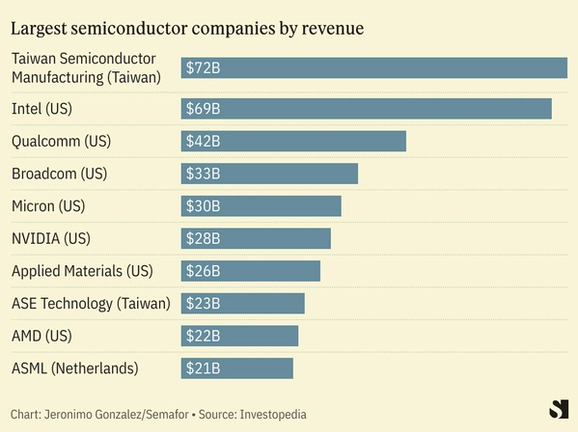The News
Chinese state media argued that one year on, U.S. sanctions on China’s chip industry have had little effect. Experts, however, are divided over the success of the sanctions.
SIGNALS
Huawei’s use of an advanced 7-nanometer chip in its new Mate 60 Pro phone is among the signs that “sanctions have failed,” the newsletter SemiAnalysis• 1 , argues. The writers also note that the U.S. has continued to grant licenses to semiconductor manufacturing equipment firms that utilize U.S. technology who are possibly "turning a blind eye" to what's happening. "It is abundantly clear," the newsletter says, that U.S. export controls are failing and that they "will not ultimately inhibit China from breaking through the barriers set last fall."
SemiAnalysis, China AI & Semiconductors Rise: U.S. Sanctions Have Failed
Other analysts argue that the hype around Huawei’s new chip is overrated. “Benchmarks only go so far in describing the real-world performance of a phone• 2 , and it is possible that the phone does not perform quite so well under actual usage,” Digits to Dollars Advisors wrote, adding that Chinese companies had reached the limit of their technical capabilities.
Digits to Dollars, Huawei Watchers and the Land of Magical Thinking

Data has shown that Taiwan Semiconductor Manufacturing (TSMC) and other U.S. companies such as Intel and Qualcomm still dominate the chip market and that China has a long way to go before it matches up to these conglomerates• 3 . But TSMC faces a different kind of challenge — retaining its engineers. The New York Times reported that amid a demographic crisis in Taiwan, many employees are overworked and have left TSMC for foreign semiconductor companies like ASML in the Netherlands, or larger tech companies like Google — where workers are offered free food and better work-life balance.
The New York Times, Taiwan Is Running Low on a Strategic Asset: Engineers



